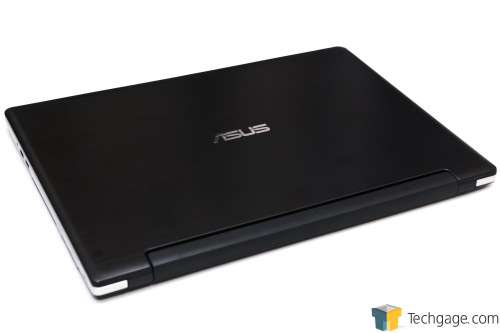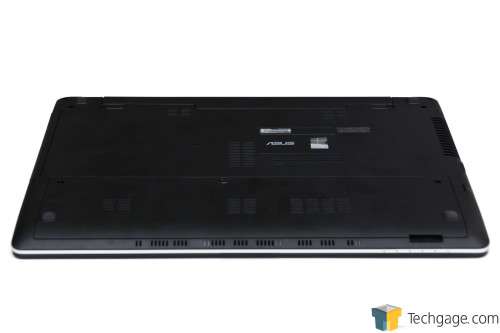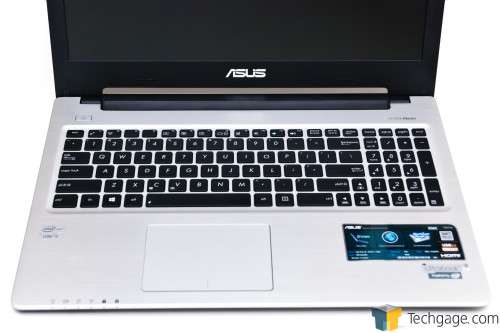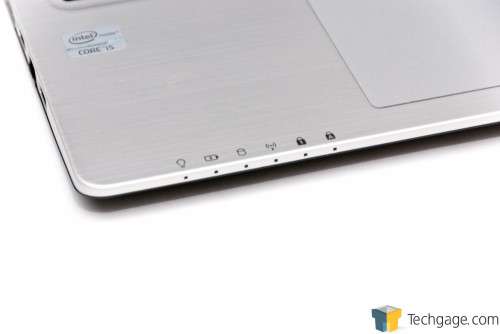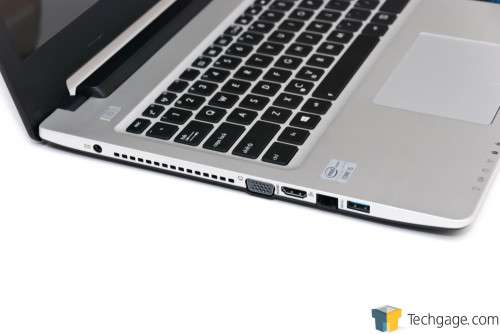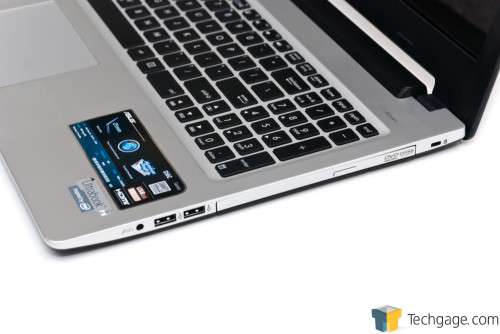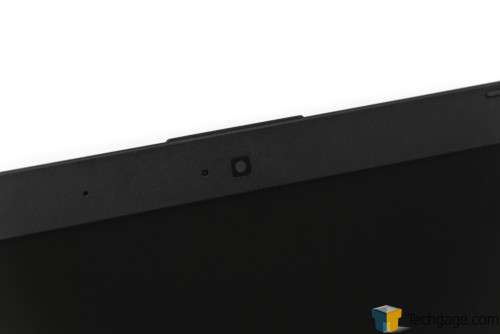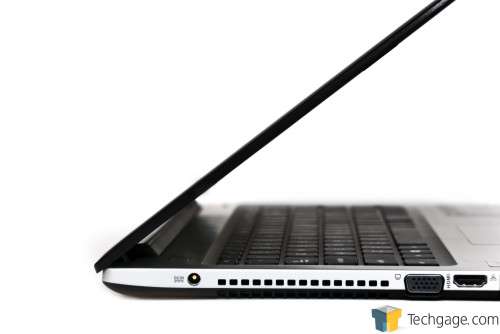- Qualcomm Launches Snapdragon 4 Gen 2 Mobile Platform
- AMD Launches Ryzen PRO 7000 Series Mobile & Desktop Platform
- Intel Launches Sleek Single-Slot Arc Pro A60 Workstation Graphics Card
- NVIDIA Announces Latest Ada Lovelace Additions: GeForce RTX 4060 Ti & RTX 4060
- Maxon Redshift With AMD Radeon GPU Rendering Support Now Available
ASUS S56C 15.6-inch Ultrabook Review

The “Ultrabook” term is often associated with super-small notebooks, but ASUS is here with a model to remind us that 15.6-inch models can be included, too. We’re taking a look at the S56C, a Core i5-3317U-powered offering that includes 6GB of memory, a 24GB SSD for caching, and is built like a tank.
Page 1 – Introduction
A couple of weeks ago, we posted a look at ASUS’ VivoBook X202E, a modest notebook that came just shy of earning itself “Ultrabook” status. Despite its lacking performance, we ended up loving everything else about the notebook, so we had great interest in seeing what ASUS could pull off with something a bit larger.
That’s where the S56C comes in. It is an Ultrabook, and a rather large one, too. It comes in at 15.6-inches, and packs in an SSD for caching, a 750GB hard drive, a beefier processor (with Turbo), is equipped with an ODD, and offers Gigabit Ethernet – something the X202E oddly didn’t.
The exact model we’re taking a look at here is the S56CA-DH51, which officially retails for $699 but can be found for as low as $630. Another option exists for those who like the S56C, but are willing to forgo a couple of niceties. The S56CA-WH31 drops the CPU down to a non-Turbo model, and likewise changes the 750GB HDD into a 500GB one and hauls out 2GB of RAM to make it 4GB. Everything else remains the same – even the SanDisk SSD used for caching. This model retails for $599, but comparison shopping can find it for closer to $499.
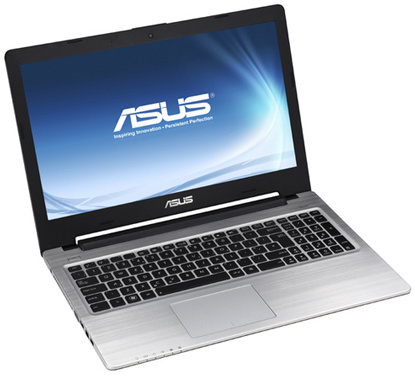
Before we get into our tour of the notebook, let’s take a deeper look at the specs.
| ASUS S56C Ultrabook 15.6″ Notebook | |
| Processor | Intel Core i5-3317U Dual-Core (1.7GHz (Turbo: 2.6GHz), 3MB Cache) |
| Memory | 6GB DDR3-1600 (Dual-Channel, 4+2GB) |
| Display | Chi Mei N156B6-L0D 15.6″ TFT LED |
| Graphics | Intel HD Graphics 4000 |
| Storage | SanDisk SSD i100 24GB (Caching) Seagate ST750LM022 750GB Hard Drive (5,400 RPM) |
| Connectivity | Realtek 1000Mbit/s Ethernet Qualcomm Atheros AR9485 802.11b/g/n Wireless Bluetooth 4.0 Headphone / Microphone Combo Jack 2 x USB 2.0 1 x USB 3.0 Card Reader: SD VGA HDMI |
| Et cetera | 4-cell 2,950 mAh Battery 2.30kg (5.07lbs) Windows 8 64-bit |
I have to admit something right-off-the-bat: the biggest downside to the S56C in comparison to the X202E is the lack of a touch-screen. I’m still impressed that I feel this way, but after having spent a month with the X202E, I found myself liking the touchscreen quite a bit. There are occasions where being able to tap the screen is easier than using the mouse – especially if you usually keep a notebook to your side while you use your desktop PC. I’d be interested in hearing from those who own touchscreen-enabled notebooks to see if you’ve come to rely on the feature.
In lieu of a touchscreen, we do get a nice LED panel on the S56C that offers slightly better color-accuracy than the display on the X202E. It’s unfortunate that ASUS couldn’t pack an IPS panel in here, but what is offered is rather nice.
As mentioned above, this notebook takes advantage of SSD caching, which is pre-configured. The integrated SanDisk SSD cannot be accessed as normal through Windows, so all that will be seen upon opening “Computer” will be the primary 750GB hard drive. For those feeling adventurous, I am sure the SSD could be re-purposed, but I wouldn’t recommend going that route unless you want to risk ruining the possibility of restoring the notebook to its factory state.
Let’s kick-off the hardware tour, shall we?
The S56C is available in a couple of common colors: black, black and of course, black. The hood features a brushed texture effect, though it’s absolutely smooth to the touch. The ASUS logo isn’t a mere silk-screen but rather a metal logo built-into the hood. Overall, it’s attractive.
A quick look at the underbelly shows off the numerous vents and feet locations. While I’m sure the back could be taken off with some effort, I didn’t want to risk knocking anything out of place, so I left it alone. Ultrabooks are compact, and are generally not meant to be opened by the end-user.
It’s difficult to tell from the photo below, but the inside of the S56C is also brushed, but again is totally smooth. Like the X202E, this notebook has a smooth touchpad and chiclet-styled keys.
And speaking of keys; a better look:
Many of the keys found on this notebook have alternate functions that go beyond simple media keys. Hitting Fn and then the numpad Enter, for example, launches a calculator. Fn + Spacebar opens up the Power4Gear Hybrid software. Then of course, there are other combinations for WiFi enable/disable, brightness, audio increase/decrease and so forth.
One of my favorite parts of the X202E was its nice touchpad – it could be used for hours and it wouldn’t irritate your fingers. Fortunately, the same touchpad is implemented here, so I have the same nice things to say about it. There is a problem where I feel I launch the Charms bar or Start screen too easily (by swiping the sides), but that functionality can be disabled.
On the bottom-left side of the notebook, there are status LEDs for Powered On, Charging, HDD Activity, WiFi, Numlock and Caps Lock.
At the left-side of the notebook, from left to right, we see the AC power adapter, ventilation area, VGA, HDMI, Ethernet and USB 3.0. I can understand putting a USB port near the front of a notebook, but I don’t feel the same about the others. If you plug your notebook into a wired connection often, it’s going to be a little awkward to have the cable sitting right beside your left hand.
On the opposite side, again from left to right, there’s an audio input/output combo port, two USB 2.0 ports, the optical drive and also a Kensington security lock.
At the top of the display is an “HD Webcam” supporting a resolution of 1280×720. In quick tests, it’s “just a webcam”, nothing special, but it certainly gets the job done. It’s far better than the 640×480 offerings that so many notebooks ship with.
When taking a look at the S56C from the side, we can really see just how thin its hood is. Really, the entire notebook as a whole is thin, despite its larger size. So while it might not be the most portable notebook around, it should have no problem fitting into a backpack or briefcase that can support it length-wise.
Once again, ASUS has delivered a notebook that’s both durable and attractive. It does tend to attract fingerprints (like the X202E did), but for a durable notebook, I’ll take it.
Next up, a look at the S56C’s software package.
Support our efforts! With ad revenue at an all-time low for written websites, we're relying more than ever on reader support to help us continue putting so much effort into this type of content. You can support us by becoming a Patron, or by using our Amazon shopping affiliate links listed through our articles. Thanks for your support!




